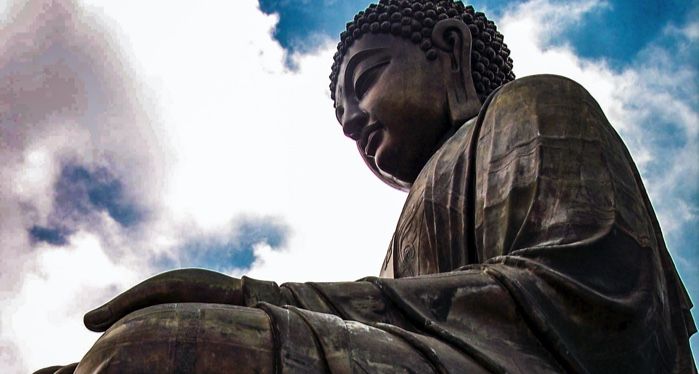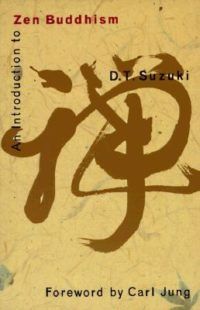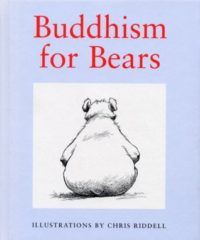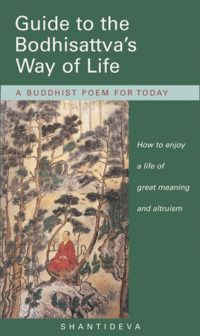
Find Your Buddhism With Books
Buddhism sometimes seems mysterious. Other times it seems simple. Sometimes it seems like it’s unattainable. Sometimes it feels like something we all practice whether or not we are aware of it. The following selections help to demystify Buddhist tenets and philosophies—some have pictures, too!
 Buddhism (The World Religions) by Madhu Bazaz Wangu
Buddhism (The World Religions) by Madhu Bazaz Wangu
Here’s an overview of Buddhism from its roots in India. The book chronicles how Buddhist ideas crossed the globe and how it’s continued to grow over time. In addition to the history, Wangu’s account introduces the foundational teachings of Buddhism and breaks down its three major schools (Tehravada, Mahayana, and Vajrayana). I like this book as a good starting point because its mostly an overview without sounding like a manual.
 An Introduction to Zen Buddhism by D. T. Suzuki with a foreword by Carl Jung
An Introduction to Zen Buddhism by D. T. Suzuki with a foreword by Carl Jung
Dr. Carl Jung opens this intro to Buddhism from a psychiatric point of view. It sets the stage for the intriguing explanation of Zen beliefs. It’s got philosophy. It’s got ethics. It’s got all the teachings in uncomplicated terms. This introduction can be read as an informative exploration of Buddhism as well as a wealth of advice for living a Zen-ful life through enlightenment.
 Buddhism for Bears by Claire Nielson, illustrated by Chris Riddell
Buddhism for Bears by Claire Nielson, illustrated by Chris Riddell
Bears can be adorable! Buddhism can be fun! Nielson invokes very simple Zen ideas and shows how bears can easily follow them. The book breaks down the philosophy into sections for Wisdom, Self-Control, Techniques, and Truth. Then we get a Buddhist thought like, What is power? Then we see a very burly bear pondering power and finding his way to answers. If a bear can do it, so can we!
Side Note: If bears are not for you, you can try Chris Riddell’s Buddhism for Sheep. If sheep can do it, so too can we.
 Tea and Cake with Demons: A Buddhist Guide to Feeling Worthy by Adreanna Limbach
Tea and Cake with Demons: A Buddhist Guide to Feeling Worthy by Adreanna Limbach
I love the affable personal style Limbach brings to the Buddhist conversation. Also, I’m a big fan of tea, which I always associate with Eastern beliefs (which may or may not make any kind of sense). The focus of this book is self-worth. It offers advice through both traditional and modern tales. Then there’s a section that explains the Four Noble Truths in understandable language. Limbach acts as a cheerleader for us all to find our confidence, create our own happiness, and achieve all those goals we hope for.
 Guide to the Bodhisattva’s Way of Life: A Buddhist Poem for Today by Shantideva, Translated by Neil Elliot with Geshe Kelsang Gyatso
Guide to the Bodhisattva’s Way of Life: A Buddhist Poem for Today by Shantideva, Translated by Neil Elliot with Geshe Kelsang Gyatso
If you prefer your Buddhist teachings in verse, we’ve got that, too. Some versions of this book have the subtitle “how to enjoy a life of great meaning and altruism.” That makes me feel like this poem holds the answers to all of life’s great mysteries. Pretty powerful stuff. Shantideva was an Indian Buddhist monk. In the 8th Century, he penned this epic poem about happiness, love, and enlightenment, and peace. Reading the poem parallels an act of meditation, which is a foundation of Buddhism. Throughout the contemplations, an overview of the Mahayana Buddhist path emerges. And if you’ve read Buddhism as listed above, then you already know what Mahayana means!
While we’re chatting Buddhism, Dinty Moore has a fabulous creative non-fiction piece called “Fear and Craving in Disney World.” The essay explores Buddhist koans in light of theme park pop culture society.
Another side note: I slept under a bodhisattva at the Rubin Museum once. It. Was. Uh. May. ZING!
For more about meditation—a big part of Buddhism—check out these suggestions. If you want to get some yoga on to go along with your meditation, try these reads.



 Buddhism (The World Religions)
Buddhism (The World Religions)













